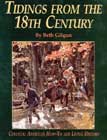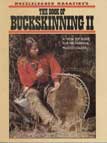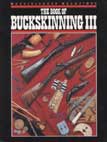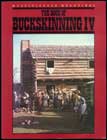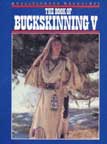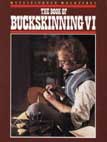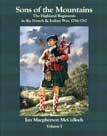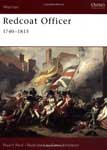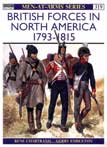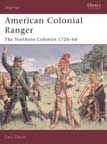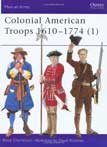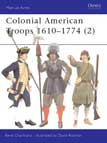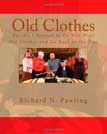

The period between 1600 and 1800 was a major time in the history of the world. Not only was there what is considered the world's first "World War" i.e. the French & Indian War (called the "7 Year's War" in Europe and other places), but also, this is the time of the American Revolutionary War (called "RevWar" or "Revvy War" by reenactors) began what was to be a reoccurring reason for wars in the world--freedom from oppression.
During this time period, in Europe, was the "Thirty Years War"--less popular for reenacting in the New World though some do it.
Also popular is "Pirate Reenacting" which is kind of like RenFaires, but with more feathers and pistols. Most don't actually have a ship to "play on," but they DO seem to have a lot of fun. Reference books abound about this area of history.
Beth Gilgun brings the mid to late 1700s to life with her entertaining and informative "letters" to a friend on the frontier. Great for reenactors, teachers, historic interpreters, and theatrical costumers. As an accomplished seamstress and goodwife, Gilgun shares with her "friend" information on clothing for men, women and children, as well as other topics of daily life in Colonial America. Included are clear, concise instructions for constructing reproduction 18th century garments, from choosing fabric to finishing. Her chatty letters include news about current events and the latest goods available on the East Coast.
*I met Beth Gilgun at a RevWar event once. I found her to be as neat in person as she seems in her books.
This book is a compilation of the first ten years of Mark Baker's column from Muzzleloader Magazine.
I don't know about you, but I have been a fan of Baker's for years... his ideas and articles are not only useful for his time-period, they also translate well to other time periods. Mark Baker truly IS one of the leading lights of "Experimental Archeology."
A Pilgrim's Journey contains over 300 pages of treks, scouts, hunts and how-to. Baker shares his knowledge and insights gained from wilderness experiences, extensive research, and from his partners and mentors along the way. Join Mark as he takes his pilgrim's journey back to the 18th century frontier. From flintlocks and moccasins to shooting bags and knapsacks, Baker explores the way of life of the Colonial woodsman. Learn about the clothing, accoutrements, food and skills from an era that helped forge the American Spirit and a new nation. Softcover. 306 pages with over 250 quality illustrations and photos, including many new photos in and updated layout.
Baker explores the longhunter's life in 18th century frontier America through the study of first-person accounts and hands-on research. In this second volume, Baker continues his pilgrim's journey to become an 18th century longhunter. Learn about the clothing, gear and food of the early American frontiersmen in his quest to discover the skills, lifestyle and mindset of those early woodsmen. Signed, limited edition hardcover with full-color dust jacket.
In-depth information on recreating life on the American frontier. Expand your enjoyment of living history with chapters including: Horseback Travel, Powder Horns, Canoeing, Camp Gear, Leather Clothing and Gun Tune-Up & Care. Each chapter was written by an experienced and knowledgeable participant in frontier reenacting. Lavishly illustrated with photographs and line drawings.
Explore recreating life on the American frontier. Solid information shared by knowledgeable and experienced reenactors help modern-day frontiersmen get started in the sport known as buckskinning. Subjects include: Historic Guns & Today's Makers, Quillworking, Trade Beads, 18th & 19th Century Cooking, The Hunting Pouch, Beadworking, Techniques for Making Footwear, and Period Shelters. Special color section of beadwork, quillwork, authentic frontier clothing, and trade bead photos
Enhance your frontier skills and knowledge. Each chapter was written by a knowledgeable and experienced participant in the sport known as buckskinning and lavishly illustrated with photos and drawings. Chapters include: Traditional Blacksmithing, Blankets in Early America, From Raw Hides to Rawhide, Styles of the Southwest, Smoothbores on the Frontier, Trade Silver, Backwoods Knives, Lighting the Primitive Camp, and Historic Sites & Museums. Emphasis is on demonstrating skills and how-to information.
Practical frontier American skills and knowledge are the focus in part five of this series on the sport known as buckskinning. Each chapter was written by a different author with in-depth knowledge of his or her topic. Chapters include: Fur Trade Indian Dresses; Old-Time Music & Instruments; Trade Goods for Rendezvous; Tipi Know-How; Engraving & Carving; Historic Sites & Museums II; Games, Sports & Other Amusements; and Pack Saddles & Panniers. Special color section features the dress of fur trade Indian women and horseback photos. Each chapter is abundantly illustrated with photos and drawings.
Hands-on frontier skills and in-depth historical information. Part six in this bestselling series on the pastime of recreating the American frontier, known as buckskinning, features more first-rate historical information and clear, hands-on instructions in the skills and crafts of the American pioneers. Chapters include: The Traditional Hunting Pouch, Horse Gear-East & West, Making a Wooden Bow, American Powder Horns, Frontier Trail Foods, Old-Time Shooting Matches, Period Trekking, and Finger Weaving. Special color section features photos of period horseback trips, powder horns, hunting pouches, and finger-woven sashes.
Chronicles the stirring story of the three Highland regiments that soldiered in North America during the French and Indian War. The exploits of the 42nd (Black Watch), 77th (Montgomery's) and 78th (Fraser's) Highlanders, in some of the most bloody and desperate battles ever fought on the this continent, were a critical factor in transforming the overall image of Highlanders in the latter half of the 18th century from Jacobite rebels to Imperial heros.
The commissioned officer ranks in the British Army from 1740-1815 were almost entirely composed of the affluent and educated - the sons of the landed gentry, the wealthy, and other professional people. This title looks at the enlistment, training, daily life and combat experiences of the typical British officer in the crucial periods of the North American conflicts, the American Revolution, and the Napoleonic Wars. It compliments the author's previous treatments in Warrior 19 British Redcoat 1740-93 and Warrior 20 British Redcoat (2) 1793-1815, which deal exclusively with the common infantryman, and balances these discussions through a look at the 'fellows in silk stockings'. Particular emphasis is placed on the experiences and activities in North America in the late 18th century.
The end of the American Revolution in 1783 confirmed the independence of the republic of the United States of America from Great Britain. Britain, however, still managed to make its presence felt in North America. Britain's Orders in Council concerning trade were a major irritant which, added to other issues including the sale of Louisiana and the impressment of American soldiers by the Royal Navy, finally caused the United States to declare war on 19 June 1812. This volume examines in detail the organisation, tactics and equipment of the British forces between 1793 and 1815.
This title examines the development of the Colonial Rangers in this period, and shows how they were taught to survive in the woods, to fight hand-to-hand, to scalp a fallen foe, and to fight across all types of terrain and in all weather conditions. Based on previously unpublished source material, it paints a vivid picture of the life, appearance and experiences of an American colonial ranger in the northern colonies. Covering the battle at Lovewell's Pond in 1725, a watershed event in New England’s frontier history, through to King George's War (1740-1748), the rangers were prepared for the final imperial contest for control of North America, the French-Indian War (1754-1763).
From the earliest English settlements the survival of the infant colonies in North America depended upon local militias. Throughout the 17th and early 18th centuries the burden of successive wars with the American Indians, and with the regular troops and militias of Britain's colonial rivals France and Spain, fell mainly upon locally raised volunteers. This first of a fascinating three-part study includes a general introduction and chronology, and chapters on Crown troops in North America; and begins a colony-by-colony review of militias and provincial units. The text is illustrated with rare early images and with eight specially commissioned full colour plates.
From the earliest English settlements the survival of the infant colonies in North America depended upon local militias. Throughout the 17th and most of the 18th century royal troops were seldom shipped out from Britain, and the main burden of successive wars with the American Indians, and with the regular troops and militias of Britain's colonial rivals France and Spain, usually fell upon locally raised soldiers. These units also fought alongside the Crown forces during major operations such as the French-Indian War of the 1750s. This second of a fascinating three-part study covers the militias and provincial troops raised in Massachusetts, New Hampshire, Connecticut, Rhode Island, Maryland, New York and New Jersey.
This book is an indispensable guide to the often misunderstood field of living history. It presents the actuality that there is a great deal more involved in this discipline than merely “wearing old clothes and going back to the past.” This volume succinctly captures the perspectives that Richard Pawling has gained from over thirty-five years of experience in the interpretive profession (in county, state and national parks and as entrepreneur and owner of Rich Pawling’s History Alive!). Here, Pawling shares his observations and advice about everything from designing a living history persona to his successful use of this provocative teaching technique in the college classroom, to the role of research in helping you to learn about your own genealogical past. Though written for a broad audience, this book should be of particular interest to those employed as an interpretive park ranger or a naturalist, a museum or tour guide, or those who volunteer as a military reenactor or as a docent at a park, museum or historic site. Old Clothes presents the important lessons Pawling has learned along the way, the most important of which is that “life is a journey and understanding our past plays an important role in helping us to continue to learn not only about life in general, but more importantly, about ourselves.”
Pope Julius II excommunicates Italian state of Venice
Treaty of St. Truiden: anti-French Trapdoors / Bourgondisch covenant
Battle at Bicacca: Charles I and Pope Adrianus VI beat France
Mogol King Babur beats Sultan of Delhi
1st Spanish settlement in Philippines, Cebu City, forms
Peace of Beaulieu and Paix de Monsieur
King Charles I flees Oxford
Scottish general Montrose defeated
Netherlands and France sign military covenant
Frederik August I "the Strong" becomes Monarch of Saksen
Battle at Culloden Moor: Duke of Cumberland beats "James VIII & III"
US Marines attack shores of Tripoli
Americans under General Pike capture Toronto; Pike is killed
Fire destroys half of Charleston
Imakita Kosen, 1st Zen teacher of D.T. Suzuki, found the awakening
Establishment of Jewish congregations in Lower Austria prohibited
"Pomona" sinks in North Atlantic drowning all 400 aboard
Thomas J Jackson is assigned to command Harpers Ferry
President Abe Lincoln suspends writ of habeas corpus
West Virginia secedes from Virginia after Virginia secedes from US
Cornell University (Ithaca NY) is chartered
Heinrich Schliemann discovers Troi
White League, Paramilitary white supremacist organization, forms
Opera "Le Roi de Lahore" is produced (Paris)
President Hayes removes Federal troops from LA, Reconstruction ends
Pogroms against Russian Jews start in Elisabethgrad
1st Highlander (Yankee) shut-out, Philadelphia Athletics win 6-0
World Exposition opens in Luik
Sultan of Turkey Abdul Hamid II is overthrown
Belgian parliament rejects socialist motion for general voting rights
Relief laws replaces those of 1854, in the Netherlands
Pogrom leader Petljoera declares Ukraine Independence
Hadjememaar, [Corn de Gelder] elected in Amsterdam
Fritz Langs "Dr Mabuse, der Spieler" premieres in Berlin
Yakut ASSR formed in Russian SFSR
Mussolini government italian place in South Tirol / Alto Adige
Antwerp soccer tie Belgium-Netherlands 1-1
Karl Jansky reports reception of cosmic radio signal in Washington DC
Yanks pull a 1st inning triple-play and beat Philadelphia Athletics 9-8
1st US social security payment made
US Social Security system makes its 1st benefit payment
Himmler orders establishment of Auschwitz Concentration Camp
German troops occupy Athens Greece
Belgium Jews are forced to wear stars
Tornado destroys Pryor Oklahoma killing 100, injuring 300
Lou Jansen and Jan Dieters arrested, lead illegal CPN party in Holland
Soviet Union breaks contact with Polish government exiled in London
Boston Brave Jim Tobin no-hits Brooklyn Dodgers, 2-0
2nd Republic of Austria forms
Italian partisans capture Mussolini prisoner
US 5th army enters Genua
1st radar installation aboard a coml ship installed
Babe Ruth Day celebrated at Yankee Stadium and through out US
Arab legion attacks Gesher bridge on Jordan River
"Tickets, Please" opens at Coronet Theater NYC for 245 performances
South Africa passes Group Areas Act segregating races
Mohammed Mossadeq chosen Premier of Persia
"4 Saints in 3 Acts" closes at Broadway Theater NYC after 15 performances
1st general elections in British Guyana, won by Jagans PPP
Wrestler Freddie Blassie coins term "Pencil neck geek"
Heavyweight champ, Rocky Marciano, retires undefeated from boxing
"Today" show goes abroard 1st time (Paris France)
Liu Sjau-chi elected President of China PR
1st atomic powered electric-drive submarine launched (Tullibee)
South Korean President Syngman Rhee resigns
Togo (formerly French Togo) declares independence from French adm
NASA launches Explorer 11 into Earth orbit to study gamma rays
NFL officially recognizes Hall of Fame in Canton, Ohio
Sierra Leone declares independence from the UK
"Jopie" Pengel forms government in Suriname
Cuban Premier Fidel Castro arrives in Moscow
RC Duncan patents "Pampers" disposable diaper
Dmitri Shostakovitch completes his 2nd cello concert
Rocky Marciano retires as undefeated boxing champ
"Education of Hyman Kaplan" closes at Alvin NYC after 28 performances
Baltimore Oriole Tom Phoebus no-hits Boston, 6-0
Congress of Political Party Radicals (PPR) forms in the Netherlands
Carol Mann wins LPGA Raleigh Ladies Golf Invitational
Curt Flood resigns Senators after 13 games and departs for Denmark
Apollo 16 returns to Earth
New York City Mayor John Lindsey appeals that John Lennon not be deported
Kansas City Royal Steve Busby no-hits Detroit Tigers, 3-0
Pan Am 707 crashes into mountains of Bali, killing 107
Sandra Haynie wins LPGA Charity Golf Classic
"So Long 174th St" opens at Harkness Theater NYC for 16 performances
Arabic Monetary Fund established in Abu Dhabi
Bloody riots in Soweto South Africa
HCC, Hobby Computer Club, forms in the Netherlands
Accident at nuclear reactor Willow Island, W Virginia, kills 51
George Harrison releases "Love Comes to Everyone"
Barbara Barrow wins LPGA Birmingham Golf Classic
1st female soccer official is hired by NASL
Beatle Ringo Starr marries actress Barbara Bach [Goldbach]
Nordiques 1-Isles 4 - Semifinals - Isles hold 1-0 lead
Trial of John W Hinckley Jr attempted assassin of Reagan, begins
Nolan Ryan becomes strikeout King (3,509), passing Walter Johnson
Cleveland Indians beat Detroit Tigers, 8-4, in 19 innings
Over 70 inches of snow falls on Red Lake, Montana
"Sweet Charity" opens at Minskoff Theater NYC for 368 performances
Captain Midnight (John R MacDougall) interrupts HBO
Pat Bradley wins LPGA S&H Golf Classic
US Justice Department bars Austrian Chancellor Kurt Waldheim from entering US, due to his aid of Nazi Germany during WWII
"Starmites" opens at Criter Ctr SR Theater NYC for 60 performances
Beijing students take over Tiananmen Square in China
Hurricane in Bangladesh, kills 500
Mandatory seatbelt law goes into effect in Italy
50th annual barbershop quartet singing convention held (Mich)
Dodger Orel Hershiser undergoes career-threatening shoulder surgery
Firestone World Bowling Tournament of Champions won by David Ozio
"Small Family Business" opens at Music Box Theater NYC for 48 performances
New York Jets finish perfect 5-0 pre-season for 1st time
New York Mets trade David Cone to Toronto Blue Jays for Jeff Kent
Afghan Antonov AN-32 crashes at Tashqurgan, kills 76
"Inspector Calls" opens at Royale Theater NYC for 454 performances
7th longest NHL game: New Jersey Devils beat Buffalo Sabres (125 min 43 seconds)
Graeme Obree bicycles world record time (52,713 km)
President Nixon buried in Nixon Library in California
Twins righty Scott Erickson no-hits Brewers 6-0
"Indiscretions" opens at Ethel Barrymore Theater NYC for 221 performances
Coors Field in Colo opens - Denver Rockies beats Mets 11-9 in 14
"Little Foxes, " opens at Vivian Beaumont NYC for 56 performances
"Stanley, " closes at Circle in the Square Theater, New York City
Frank Nobilo wins Greater Greensboro Chrysler Classic at Forest Oaks
Las Vegas Senior Golf Classic by TruGreen-ChemLawn
Nancy Lopez wins LPGA Chick-fil-A Charity Championship
